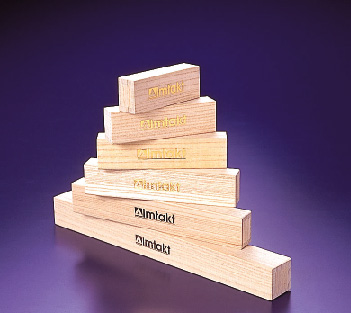About IMTAKT's Column Packaging
An optimal size paulownia box is used for each column

FEATURES of Paulownia Column Packaging
Compared to paper boxes, paulownia boxes have a smaller volume, making them convenient for column storage
Paulownia is light and moderately soft, making it ideal for protecting columns (shock resistance)
Unique End-Capping: Resistant to bases, acids, and alkalis
Packaging and transporting columns to partners is easy
It is easy to process (for storing small HPLC parts, etc.)
IMTAKT's column packaging is made of paulownia wood. The reason for its adoption is not only its aesthetic appeal but also the features mentioned on the left.
To deliver important precision products, IMTAKT developed the world's first column packaging made of paulownia material.
Most column packages are made of paper or plastic, but they require a large size for column protection, and the more columns you purchase, the more storage space is needed for empty boxes. After considering what material would be best for compactly storing valuable columns, the answer was "paulownia."
Paulownia is porous and light, and it also has moderate cushioning, making it suitable for storing precision products. Compared to paper boxes, it has greater strength, allowing for a smaller package volume. For storage, they can be compactly stored on top of HPLC units, in drawers, or on lab shelves.
Recently, opportunities to develop HPLC analysis methods and apply them at partner institutions and joint research organizations have increased. When transporting columns to partners, the packaging is compact and simple, reducing transportation costs.
Paulownia boxes are also easy to dispose of. Recent paper boxes often use plastic film coating or urethane, requiring sorted collection. Paulownia boxes, being made of a single material, do not need sorting and can be incinerated as they are.
Additionally, paulownia can be easily processed with a knife. Feel free to repurpose the paulownia box at hand for storing small HPLC parts or other small items.
Did You Know That Paulownia is a "Grass"?
Paulownia is not a "tree" but a "grass."
It is a fast-growing material that regenerates in seven years.
It is a material used in traditional Japanese crafts.
It is an environmentally friendly packaging material that does not require sorted disposal.
Common Name : Paulownia
Scientific Name : Paulownia tomentosa Steud
Family : Scrophulariaceae
Paulownia belongs to the "grass" category rather than the "tree" category. The Chinese character for paulownia, "桐," means "the same as wood." Although it is perennial and has annual rings, the center of its trunk is hollow, making it fundamentally similar to rice and bamboo. One of its characteristics is its rapid growth, being able to regenerate in about seven years. It is distributed worldwide, but high-quality material suitable for processing, with dense annual rings, is considered to be grown in relatively cold regions.
Paulownia is a porous material with a low specific gravity of 0.29, and it is characterized by its excellent workability, thermal insulation, and shock resistance. Leveraging these properties, paulownia is used in the following applications:
Furniture such as chests / Building materials for alcoves / Musical instruments such as koto / Storage containers for ceramics / Industrial materials for fireproof safesThe processing of paulownia is also a traditional Japanese craft, and its characteristics have been utilized in various applications since ancient times. It is said that dried paulownia materials have less warping and better processing properties compared to balsa, another lightweight material.
The processing method for paulownia materials generally involves cutting and laminating, without applying film coatings like paper materials. As the processed products are made of a single material, they do not require sorting when disposed of, unlike coated paper. Paulownia is an environmentally friendly natural material.